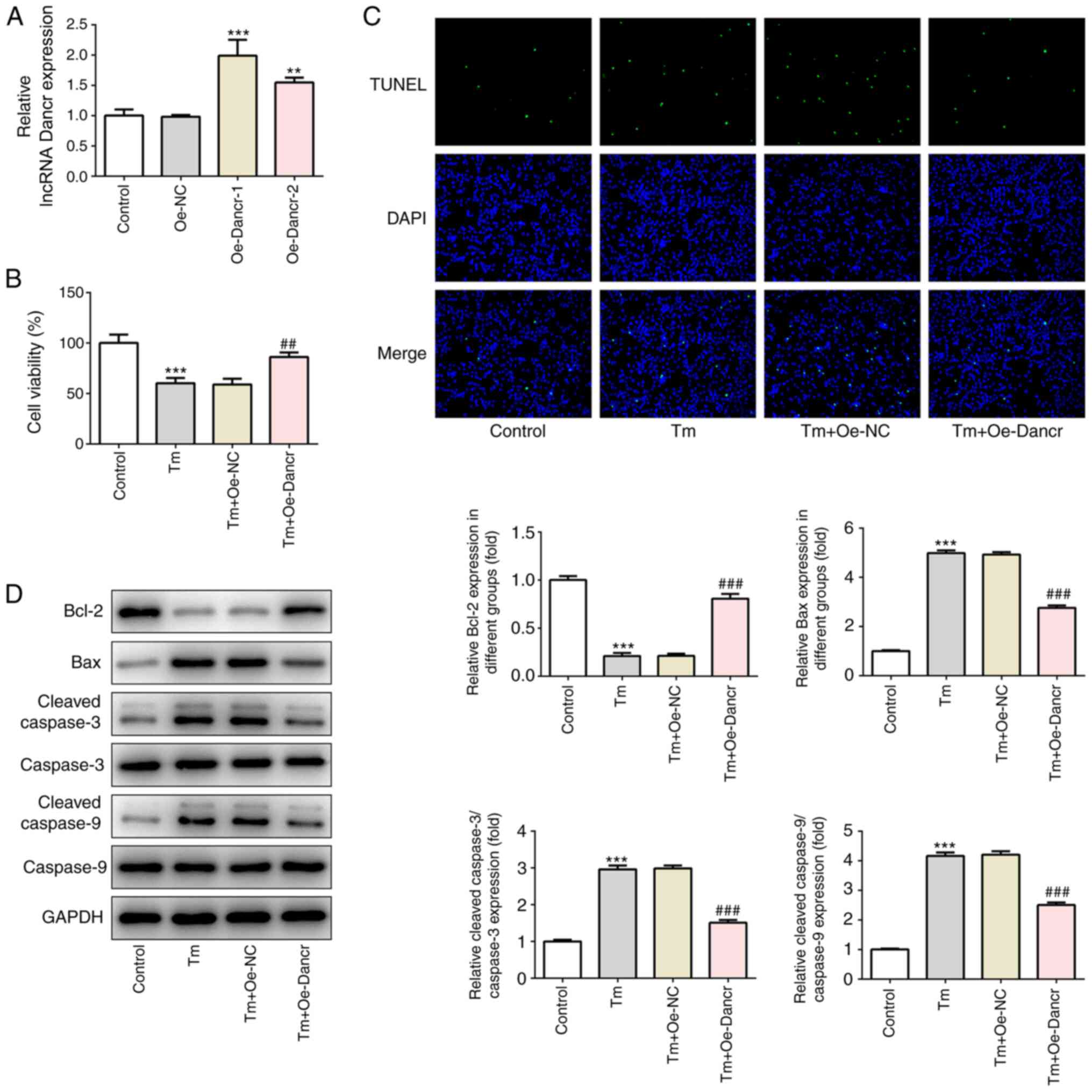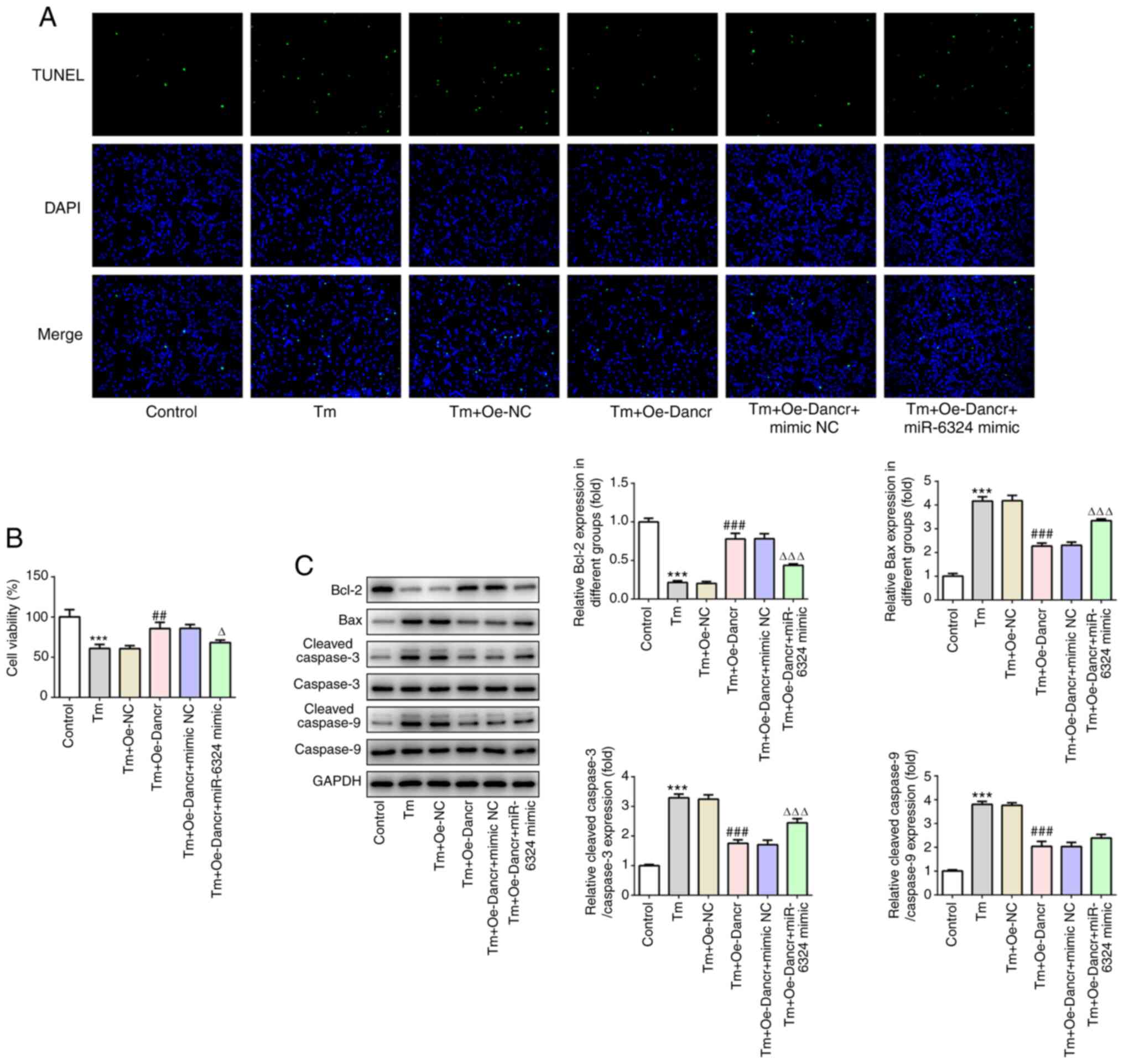|
1
|
Moran AE, Roth GA, Narula J and Mensah GA:
1990-2010 global cardiovascular disease atlas. Glob Heart. 9:3–16.
2014. View Article : Google Scholar : PubMed/NCBI
|
|
2
|
Mehta LS, Beckie TM, DeVon HA, Grines CL,
Krumholz HM, Johnson MN, Lindley KJ, Vaccarino V, Wang TY, Watson
KE, et al American Heart Association Cardiovascular Disease in
Women and Special Populations Committee of the Council on Clinical
Cardiology, Council on Epidemiology and Preventionm Council on
Cardiovascular and Stroke Nursing, Council on Quality of Care and
Outcomes Research, : Acute Myocardial Infarction in Women: A
Scientific Statement From the American Heart Association.
Circulation. 133:916–947. 2016. View Article : Google Scholar : PubMed/NCBI
|
|
3
|
Reed GW, Rossi JE and Cannon CP: Acute
myocardial infarction. Lancet. 389:197–210. 2017. View Article : Google Scholar : PubMed/NCBI
|
|
4
|
Tamis-Holland JE, Jneid H, Reynolds HR,
Agewall S, Brilakis ES, Brown TM, Lerman A, Cushman M, Kumbhani DJ,
Arslanian-Engoren C, et al American Heart Association
Interventional Cardiovascular Care Committee of the Council on
Clinical Cardiology; Council on Cardiovascular and Stroke Nursing;
Council on Epidemiology and Prevention; and Council on Quality of
Care and Outcomes Research, : Contemporary Diagnosis and Management
of Patients With Myocardial Infarction in the Absence of
Obstructive Coronary Artery Disease: A Scientific Statement From
the American Heart Association. Circulation. 139:e891–e908. 2019.
View Article : Google Scholar : PubMed/NCBI
|
|
5
|
Heusch G and Gersh BJ: The pathophysiology
of acute myocardial infarction and strategies of protection beyond
reperfusion: A continual challenge. Eur Heart J. 38:774–784.
2017.PubMed/NCBI
|
|
6
|
Asaria P, Elliott P, Douglass M, Obermeyer
Z, Soljak M, Majeed A and Ezzati M: Acute myocardial infarction
hospital admissions and deaths in England: A national follow-back
and follow-forward record-linkage study. Lancet Public Health.
2:e191–e201. 2017. View Article : Google Scholar : PubMed/NCBI
|
|
7
|
Dall C, Khan M, Chen CA and Angelos MG:
Oxygen cycling to improve survival of stem cells for myocardial
repair: A review. Life Sci. 153:124–131. 2016. View Article : Google Scholar : PubMed/NCBI
|
|
8
|
Jarroux J, Morillon A and Pinskaya M:
History, Discovery, and Classification of lncRNAs. Adv Exp Med
Biol. 1008:1–46. 2017. View Article : Google Scholar : PubMed/NCBI
|
|
9
|
Deniz E and Erman B: Long noncoding RNA
(lincRNA), a new paradigm in gene expression control. Funct Integr
Genomics. 17:135–143. 2017. View Article : Google Scholar : PubMed/NCBI
|
|
10
|
Zhao Z, Sun W, Guo Z, Zhang J, Yu H and
Liu B: Mechanisms of lncRNA/microRNA interactions in angiogenesis.
Life Sci. 254:1169002020. View Article : Google Scholar : PubMed/NCBI
|
|
11
|
Sallam T, Sandhu J and Tontonoz P: Long
noncoding RNA discovery in cardiovascular disease: Decoding Form to
Function. Circ Res. 122:155–166. 2018. View Article : Google Scholar : PubMed/NCBI
|
|
12
|
Ballantyne MD, McDonald RA and Baker AH:
lncRNA/MicroRNA interactions in the vasculature. Clin Pharmacol
Ther. 99:494–501. 2016. View
Article : Google Scholar : PubMed/NCBI
|
|
13
|
Thin KZ, Liu X, Feng X, Raveendran S and
Tu JC: LncRNA-DANCR: A valuable cancer related long non-coding RNA
for human cancers. Pathol Res Pract. 214:801–805. 2018. View Article : Google Scholar : PubMed/NCBI
|
|
14
|
Yuan SX, Wang J, Yang F, Tao QF, Zhang J,
Wang LL, Yang Y, Liu H, Wang ZG, Xu QG, et al: Long noncoding RNA
DANCR increases stemness features of hepatocellular carcinoma by
derepression of CTNNB1. Hepatology. 63:499–511. 2016. View Article : Google Scholar : PubMed/NCBI
|
|
15
|
Guo L, Gu J, Hou S, Liu D, Zhou M, Hua T,
Zhang J, Ge Z and Xu J: Long non-coding RNA DANCR promotes the
progression of non-small-cell lung cancer by inhibiting p21
expression. OncoTargets Ther. 12:135–146. 2018. View Article : Google Scholar
|
|
16
|
Bai Y, Zhang G, Chu H, Li P and Li J: The
positive feedback loop of lncRNA DANCR/miR-138/Sox4 facilitates
malignancy in non-small cell lung cancer. Am J Cancer Res.
9:270–284. 2019.PubMed/NCBI
|
|
17
|
Wang Y, Zeng X, Wang N, Zhao W, Zhang X,
Teng S, Zhang Y and Lu Z: Long noncoding RNA DANCR, working as a
competitive endogenous RNA, promotes ROCK1-mediated proliferation
and metastasis via decoying of miR-335-5p and miR-1972 in
osteosarcoma. Mol Cancer. 17:892018. View Article : Google Scholar : PubMed/NCBI
|
|
18
|
Qiu L, Zhao Q, Dai L, Zhu A, Xu X, Zhao S
and Chen J: Long non-coding RNA DANCR alleviates hypoxia-caused
H9c2 cells damage through up regulation of HIF-1α. Artif Cells
Nanomed Biotechnol. 48:533–541. 2020. View Article : Google Scholar : PubMed/NCBI
|
|
19
|
Zhang M, Tang M, Wu Q, Wang Z, Chen Z,
Ding H, Hu X, Lv X, Zhao S, Sun J, et al: LncRNA DANCR attenuates
brain microvascular endothelial cell damage induced by
oxygen-glucose deprivation through regulating of miR-33a-5p/XBP1s.
Aging (Albany NY). 12:1778–1791. 2020. View Article : Google Scholar : PubMed/NCBI
|
|
20
|
Zuo S, Kong D, Wang C, Liu J, Wang Y, Wan
Q, Yan S, Zhang J, Tang J, Zhang Q, et al: CRTH2 promotes
endoplasmic reticulum stress-induced cardiomyocyte apoptosis
through m-calpain. EMBO Mol Med. 10:e82372018.simplehttps://doi.org/10.15252/emmm.201708237
View Article : Google Scholar : PubMed/NCBI
|
|
21
|
Wang X, Xu L, Gillette TG, Jiang X and
Wang ZV: The unfolded protein response in ischemic heart disease. J
Mol Cell Cardiol. 117:19–25. 2018. View Article : Google Scholar : PubMed/NCBI
|
|
22
|
Yan M, Shu S, Guo C, Tang C and Dong Z:
Endoplasmic reticulum stress in ischemic and nephrotoxic acute
kidney injury. Ann Med. 50:381–390. 2018. View Article : Google Scholar : PubMed/NCBI
|
|
23
|
Yamamoto K and Ichikawa S: Tunicamycin:
Chemical synthesis and biosynthesis. J Antibiot (Tokyo).
72:924–933. 2019. View Article : Google Scholar : PubMed/NCBI
|
|
24
|
Wang S, Wang Z, Fan Q, Guo J, Galli G, Du
G, Wang X and Xiao W: Ginkgolide K protects the heart against
endoplasmic reticulum stress injury by activating the
inositol-requiring enzyme 1α/X box-binding protein-1 pathway. Br J
Pharmacol. 173:2402–2418. 2016. View Article : Google Scholar : PubMed/NCBI
|
|
25
|
Fernández A, Ordóñez R, Reiter RJ,
González-Gallego J and Mauriz JL: Melatonin and endoplasmic
reticulum stress: Relation to autophagy and apoptosis. J Pineal
Res. 59:292–307. 2015. View Article : Google Scholar : PubMed/NCBI
|
|
26
|
Hu J, Huang CX, Rao PP, Cao GQ, Zhang Y,
Zhou JP, Zhu LY, Liu MX and Zhang GG: MicroRNA-155 inhibition
attenuates endoplasmic reticulum stress-induced cardiomyocyte
apoptosis following myocardial infarction via reducing macrophage
inflammation. Eur J Pharmacol. 857:1724492019. View Article : Google Scholar : PubMed/NCBI
|
|
27
|
Li X, Zhao J, Geng J, Chen F, Wei Z, Liu
C, Zhang X, Li Q, Zhang J, Gao L, et al: Long non-coding RNA MEG3
knockdown attenuates endoplasmic reticulum stress-mediated
apoptosis by targeting p53 following myocardial infarction. J Cell
Mol Med. 23:8369–8380. 2019. View Article : Google Scholar : PubMed/NCBI
|
|
28
|
Zhao N, Mi L, Zhang X, Xu M, Yu H, Liu Z,
Liu X, Guan G, Gao W and Wang J: Enhanced MiR-711 transcription by
PPARγ induces endoplasmic reticulum stress-mediated apoptosis
targeting calnexin in rat cardiomyocytes after myocardial
infarction. J Mol Cell Cardiol. 118:36–45. 2018. View Article : Google Scholar : PubMed/NCBI
|
|
29
|
Xu Y, Wu L, Chen A, Xu C and Feng Q:
Protective effects of olive leaf extract on acrolein-exacerbated
myocardial infarction via an endoplasmic reticulum stress pathway.
Int J Mol Sci. 19:4932018.simplehttps://doi.org/10.3390/ijms19020493 View Article : Google Scholar
|
|
30
|
Cătană CS, Atanasov AG and Berindan-Neagoe
I: Natural products with anti-aging potential: Affected targets and
molecular mechanisms. Biotechnol Adv. 36:1649–1656. 2018.
View Article : Google Scholar : PubMed/NCBI
|
|
31
|
Dong Z, Chu G, Sima Y and Chen G: Djhsp90s
are crucial regulators during planarian regeneration and tissue
homeostasis. Biochem Biophys Res Commun. 498:723–728. 2018.
View Article : Google Scholar : PubMed/NCBI
|
|
32
|
Wang L, Li Y, Ning N, Wang J, Yan Z, Zhang
S, Jiao X, Wang X and Liu H: Decreased autophagy induced by
β1-adrenoceptor autoantibodies contributes to cardiomyocyte
apoptosis. Cell Death Dis. 9:4062018. View Article : Google Scholar : PubMed/NCBI
|
|
33
|
Aisa Z, Liao GC, Shen XL, Chen J, Li L and
Jiang SB: Effect of autophagy on myocardial infarction and its
mechanism. Eur Rev Med Pharmacol Sci. 21:3705–3713. 2017.PubMed/NCBI
|
|
34
|
Kanamori H, Takemura G, Goto K, Maruyama
R, Ono K, Nagao K, Tsujimoto A, Ogino A, Takeyama T, Kawaguchi T,
et al: Autophagy limits acute myocardial infarction induced by
permanent coronary artery occlusion. Am J Physiol Heart Circ
Physiol. 300:H2261–H2271. 2011. View Article : Google Scholar : PubMed/NCBI
|
|
35
|
Wu D, Zhang K and Hu P: The role of
autophagy in acute myocardial infarction. Front Pharmacol.
10:5512019. View Article : Google Scholar : PubMed/NCBI
|
|
36
|
Yu Y, Sun G, Luo Y, Wang M, Chen R, Zhang
J, Ai Q, Xing N and Sun X: Cardioprotective effects of
Notoginsenoside R1 against ischemia/reperfusion injuries by
regulating oxidative stress- and endoplasmic reticulum stress-
related signaling pathways. Sci Rep. 6:217302016. View Article : Google Scholar : PubMed/NCBI
|
|
37
|
Livak KJ and Schmittgen TD: Analysis of
relative gene expression data using real-time quantitative PCR and
the 2(-Delta Delta C(T)) Method. Methods. 25:402–408. 2001.
View Article : Google Scholar : PubMed/NCBI
|
|
38
|
Liao B, Dong S, Xu Z, Gao F, Zhang S and
Liang R: LncRNA Kcnq1ot1 renders cardiomyocytes apoptosis in acute
myocardial infarction model by up-regulating Tead1. Life Sci.
256:1178112020. View Article : Google Scholar : PubMed/NCBI
|
|
39
|
Lai L, Liu Y, Liu Y, Zhang N, Cao S, Zhang
X and Wu D: Role of endoplasmic reticulum oxidase 1α in H9C2
cardiomyocytes following hypoxia/reoxygenation injury. Mol Med Rep.
22:1420–1428. 2020. View Article : Google Scholar : PubMed/NCBI
|
|
40
|
Walter P and Ron D: The unfolded protein
response: From stress pathway to homeostatic regulation. Science.
334:1081–1086. 2011. View Article : Google Scholar : PubMed/NCBI
|
|
41
|
Oyadomari S and Mori M: Roles of
CHOP/GADD153 in endoplasmic reticulum stress. Cell Death Differ.
11:381–389. 2004. View Article : Google Scholar : PubMed/NCBI
|
|
42
|
Durante W: Targeting endoplasmic reticulum
stress in hypoxia-induced cardiac injury. Vascul Pharmacol. 83:1–3.
2016. View Article : Google Scholar : PubMed/NCBI
|
|
43
|
Levy JMM, Towers CG and Thorburn A:
Targeting autophagy in cancer. Nat Rev Cancer. 17:528–542. 2017.
View Article : Google Scholar : PubMed/NCBI
|
|
44
|
Lin R, Su Z, Tan X, Su Y, Chen Y, Shu X,
Liang S, Wang J and Xie S: Effect of endoplasmic reticulum stress
and autophagy in the regulation of post-infarct cardiac eepair.
Arch Med Res. 49:576–582. 2018. View Article : Google Scholar : PubMed/NCBI
|
|
45
|
Wiersma M, Meijering RAM, Qi XY, Zhang D,
Liu T, Hoogstra-Berends F, Sibon OCM, Henning RH, Nattel S and
Brundel BJJM: Endoplasmic reticulum stress is associated with
autophagy and cardiomyocyte remodeling in experimental and human
atrial fibrillation. J Am Heart Assoc. 6:e0064582017.doi:
10.1161/JAHA.117.006458. View Article : Google Scholar : PubMed/NCBI
|
|
46
|
Holdt LM and Teupser D: Long noncoding RNA
ANRIL: Lnc-ing genetic variation at the chromosome 9p21 locus to
molecular mechanisms of atherosclerosis. Front Cardiovasc Med.
5:1452018. View Article : Google Scholar : PubMed/NCBI
|
|
47
|
Chi JS, Li JZ, Jia JJ, Zhang T, Liu XM and
Yi L: Long non-coding RNA ANRIL in gene regulation and its duality
in atherosclerosis. J Huazhong Univ Sci Technolog Med Sci.
37:816–822. 2017.doi: 10.1007/s11596-017-1812-y. PubMed/NCBI
|
|
48
|
Chang JC, Hu WF, Lee WS, Lin JH, Ting PC,
Chang HR, Shieh KR, Chen TI and Yang KT: Intermittent hypoxia
induces autophagy to protect cardiomyocytes from endoplasmic
reticulum stress and apoptosis. Front Physiol. 10:9952019.
View Article : Google Scholar : PubMed/NCBI
|
















